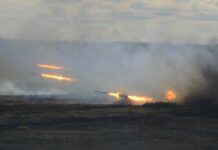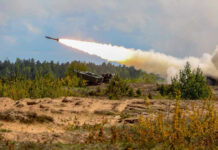
Defense Secretary Pete Hegseth has summoned 800 of America’s highest-ranking military officers to an emergency meeting at Quantico, creating the largest gathering of generals and admirals in modern U.S. history while keeping the agenda completely classified.
Story Overview
- Approximately 800 generals and admirals ordered to attend mandatory meeting at Marine Corps Base Quantico
- Pentagon refuses to disclose the meeting’s purpose, creating unprecedented secrecy around the gathering
- The scale disrupts global military operations as senior leaders abandon overseas commands
- Meeting occurs amid Hegseth’s rapid policy changes including high-profile firings and push to rebrand Pentagon as “Department of War”
An Unprecedented Military Mobilization
The sheer magnitude of this gathering defies military convention. Never before has the Pentagon assembled such a massive collection of senior leadership outside of wartime crisis. Congressional Research Service data confirms approximately 800 officers hold the rank of brigadier general or above across all service branches. Hegseth essentially ordered every available general and admiral to drop everything and report to Quantico within days.
The logistical nightmare alone speaks volumes about the meeting’s importance. Commanders overseeing critical operations in Europe, Asia, and the Middle East must abandon their posts. Strategic nuclear forces, cyber warfare units, and special operations commands worldwide are temporarily operating without their top leadership. This level of disruption suggests something monumentally significant is unfolding behind closed doors.
The Wall of Pentagon Silence
Pentagon spokesperson Sean Parnell confirmed the meeting’s existence but stonewalled every question about its purpose. This level of operational security typically reserves itself for the most sensitive national security matters. The administration’s refusal to provide even basic context has military analysts scrambling to decode the implications. When the Defense Department clams up this completely, it usually means major changes are coming.
The timing coincides with Hegseth’s aggressive restructuring of Pentagon leadership. Since taking office, the former Fox News personality has systematically removed generals and admirals who don’t align with the Trump administration’s vision. His push to eliminate diversity programs and rebrand the Department of Defense as the “Department of War” signals a fundamental philosophical shift in how America approaches military affairs.
Civil-Military Relations Under Pressure
Military historians note the dangerous precedent this meeting establishes. Previous large-scale leadership gatherings occurred during World War II and immediately after 9/11, but even those events involved fewer senior officers. The current situation lacks any obvious external crisis that would justify such drastic measures. This raises uncomfortable questions about whether civilian leadership trusts the military hierarchy.
The forced attendance of overseas commanders creates operational vulnerabilities that adversaries could exploit. Russian and Chinese intelligence services undoubtedly noticed the sudden absence of key American military leaders from their global posts. Smart enemies capitalize on moments when their opponents’ command structures are disrupted. Hegseth’s decision suggests whatever message he intends to deliver outweighs these substantial security risks.

































